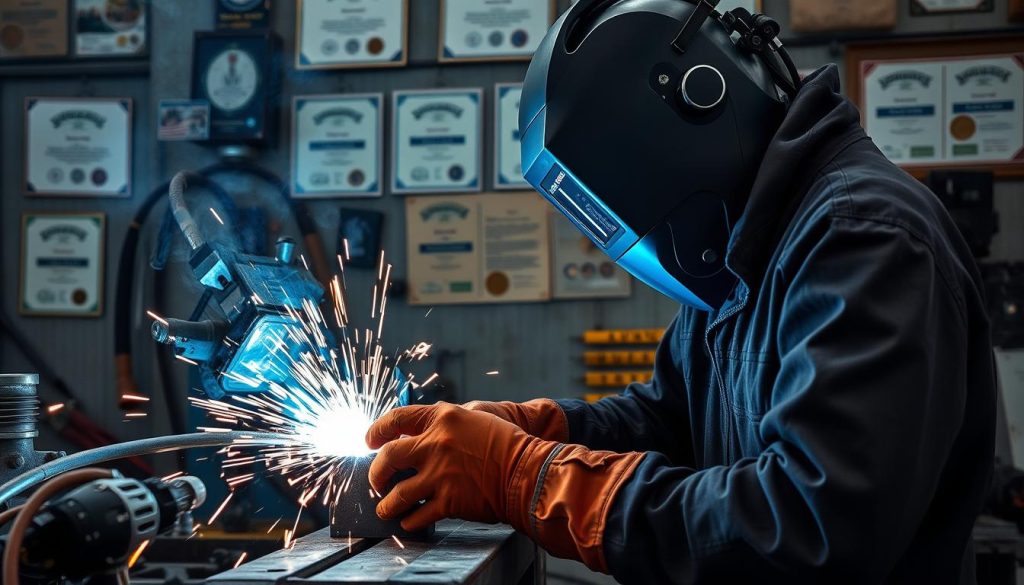Getting an AWS (American Welding Society) certification is key for welders. It shows you’re skilled and serious about your career. The AWS (Welding Certification) Test is what employers look for. It makes sure welders are top-notch in quality and safety.
This guide will help you understand the AWS welding certification process. You’ll learn what to expect during the test and how to prepare. It’s all about success.

The American Welding Society (AWS) has a detailed welding certification program. It’s the top standard for welding pros. To get an aws certified welder badge, you must pass a tough test. This test checks your skills, knowledge, and safety habits.
The aws welding credentials prove a welder’s skill in certain welding methods. You get these by doing hands-on tests, writing exams, and following aws welder testing procedures and aws welder performance evaluation rules.
To get aws welding qualifications, you need to show you’re good at welding, materials, and following codes. The aws welder certification process changes based on the certification. But, it usually includes a practical test and a written exam.
The AWS has many welding certifications, like Certified Welder, Certified Welding Inspector, and Certified Welding Supervisor. Each one has its own needs and shows different levels of skill and responsibility in welding.
| Certification | Focus | Key Requirements |
|---|---|---|
| Certified Welder | Hands-on welding skills | Successful completion of a practical welding test |
| Certified Welding Inspector | Inspection and quality control | Passing written and practical examinations, as well as meeting educational and experience requirements |
| Certified Welding Supervisor | Welding management and supervision | Demonstrating advanced knowledge of welding processes, codes, and personnel management |
Getting an aws certified welder badge or other aws welding qualifications shows you’re serious about being great. It proves you can meet the industry’s high standards.
Are you getting ready for the AWS (American Welding Society) welding certification test? Knowing what to expect can make you feel more confident. It helps you show your skills in aws welder skills assessment, aws welding code standards, and welding code compliance. This part explains the AWS welder testing process, so you can do well.
The aws welder testing checks your practical skills and knowledge. It has two main parts:
The AWS welder certification test lasts from 2 to 4 hours. During this time, aws certified welding professionals will watch and judge you.
By knowing the AWS welding test format and what’s expected, you can prepare better. Learning the aws welder skills assessment and aws welding code standards is key. It shows your expertise and meets the industry’s welding code compliance rules.
To ace the AWS welding test, you need a solid plan. Start by doing a welding skills assessment to spot your weak spots. This should cover different welding methods like SMAW, GTAW, and GMAW.
Assessing your skills in various welding techniques helps you focus on what to improve. This ensures you’re ready to show off your welding qualification in the AWS test.
It’s not just about the skills; knowing the AWS welding code standards and materials is key. You should also understand the welding inspector certification needs and the welding exams and welding certifications for your field.